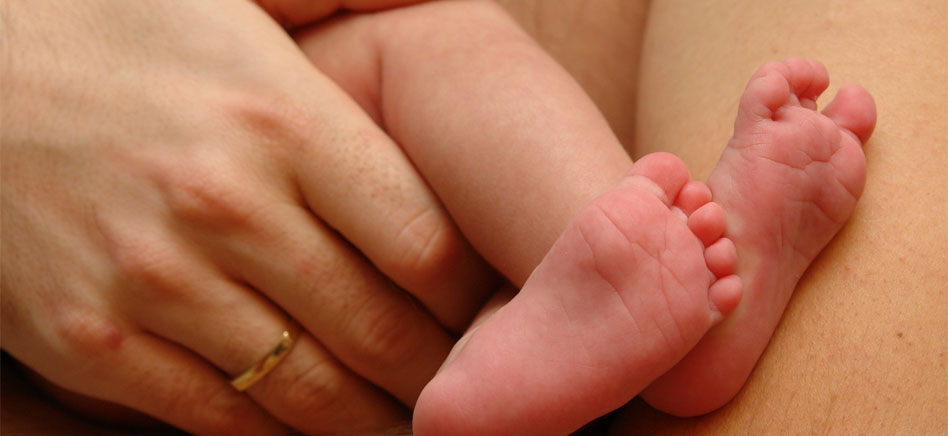Skin-to-skin contact
Skin-to-skin contact is when you hold your baby in close contact, skin to skin, as soon as possible after birth. Your warmth, smell and familiar heartbeat will make your baby feel safe and calm.
This is a great time to start your first breastfeed because your baby will be alert and want to feed within a couple of hours of birth. Your midwife can help you with this,
Your baby will be happier if you keep him near you and feed him whenever he is hungry. This will remind your body to produce plenty of milk.
This wonderful video explains the importance of early skin to skin contact with your baby.
Benefits of skin to skin for the baby
Benefits of skin to skin for the mother
- Higher levels of satisfaction and positive feelings
- Increases feelings of love and nurturing
- Improved bonding and attachment between mother and baby
- Makes baby led breastfeeding easier
- For more information on how to develop a close and loving relationship with your baby read Unicef’s Baby Friendly leaflet, Building a Happy Baby
Breastfeeding in itself brings with it many more health benefits for mother and baby.
Some things to remember…
- Include dads
- Skin-to-skin is a great way to calm a baby who is distressed. Babies who have skin-to-skin actually cry less.
- A baby of any age will benefit from skin-to-skin. Even if your baby is in the special care unit it is usually possible to give skin-to-skin, and in fact is often encouraged. This is called ‘kangaroo care’ because your baby is held so close to you – just like a baby kangaroo! Older babies benefit too and it can help to comfort them.
- Skin-to-skin gets your baby used to being held unclothed and can give you the chance to try baby massage. Baby massage has lots of benefits for babies; it helps baby relax, and promotes longer, restful sleep as well as aiding digestion, breathing and circulation. It can help improve baby’s immune system and to relieve gas and colic. It helps mums and dads bond with their babies and feel more confident when carrying and handling them. It can also be really good fun!
- Skin-to-skin helps to encourage breastfeeding when done by the mother or the father. When dads give skin-to-skin the baby’s mum can have a chance to rest and it gives dads a chance to have a special, private moment with their baby while Mum gets some peace. When Mum gives skin-to-skin it enables the baby free access to the breast, which makes responsive feeding (or baby-led-feeding) a lot easier.
- If you are bottle feeding, hold your baby close during feeds and look into his eyes. Learn to notice his cues that he wants to be fed and when he has had enough. If you and your partner try and give most of the feeds yourselves, this will help build up a close and loving bond with your baby. Continuing skin-to-skin contact can calm and comfort you both at any time. Have a look at the Unicef Baby Friendly leaflet, Guide for Parents who Formula Feed
Birth Plan
- If your baby is born in Sheffield, skin to skin contact will be offered and encouraged immediately after birth, unless there is a clinical illness in the mother or baby to prevent it.
- Include in your birth plan or mention to your midwife that you would like to have skin-to-skin contact immediately after the birth. It does not matter what type of delivery you have, skin-to-skin can still be done.
Using a sling for daytime sleep
Research looking at newborn babies has shown that close contact helps them to sleep more quietly and for longer. They can hear your heartbeat, feel your movements and be reassured that you are close. When your baby starts to stir, you will be immediately aware of it if you are wearing them. You can pick up on their feeding cues and breast milk production is improved when you keep your baby close to you. This is because of increased production of the hormone oxytocin, which helps bonding.
For dads and partners, baby wearing may allow you to take your baby for a walk and help you to bond, giving your partner some time to themselves.
Following some simple guidelines will help you to keep your baby safe in a sling.
- Tight
- In view at all times
- Close enough to kiss
- Keep chin off the chest
- Supported back
Click here for more information about sling wearing from ISIS, the infant sleep information source
You may find this link to the Sheffield Slings group useful
